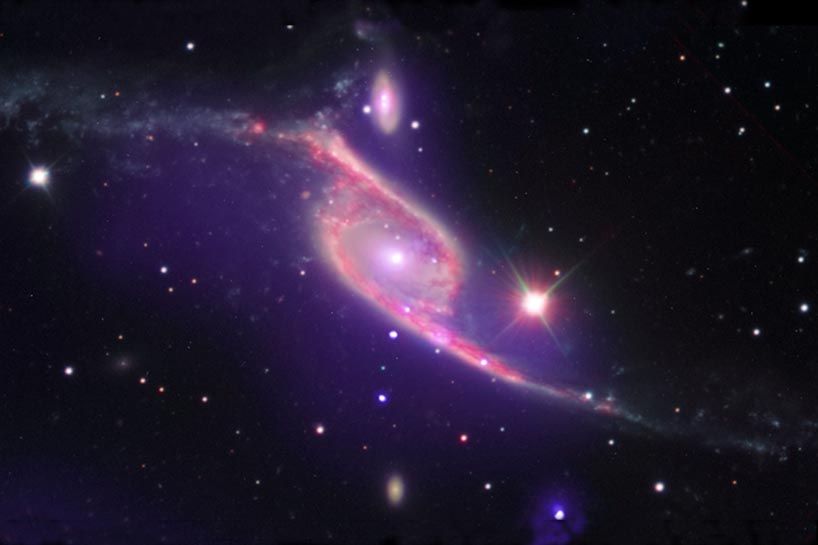
Switches on Black Hole
Starburst Galaxy
RA 20h 16m 57s Dec -70 46' 06
Pavo
About 180 million light years
Image is 347 arcsec across (310,000 light years)
December 14 & 16, 2005
21 hours
X-ray: NASA/CXC/SAO/M.Machacek; Optical: ESO/VLT;
Infrared: NASA/JPL/Caltech
December 10, 2009
Related images: G9924 G0912 G1437 2014 image: NGC 6872
ABOUT THIS IMAGE:
This composite image of data from three different telescopes shows an ongoing collision between two galaxies, NGC 6872 and IC 4970. X-ray data from NASA's Chandra X-ray Observatory is shown in purple, while Spitzer Space Telescope's infrared data is red and optical data from ESO's Very Large Telescope (VLT) is colored red, green and blue.
Astronomers think that supermassive black holes exist at the center of most galaxies. Not only do the galaxies and black holes seem to co-exist, they are apparently inextricably linked in their evolution. To better understand this symbiotic relationship, scientists have turned to rapidly growing black holes - so-called active galactic nucleus (AGN) - to study how they are affected by their galactic environments.
The latest data from Chandra and Spitzer show that IC 4970, the small galaxy at the top of the image, contains an AGN, but one that is heavily cocooned in gas and dust. This means in optical light telescopes, like the VLT, there is little to see. X-rays and infrared light, however, can penetrate this veil of material and reveal the light show that is generated as material heats up before falling onto the black hole (seen as a bright point-like source).
Despite
this obscuring gas and dust around IC 4970, the Chandra data suggest that
there is not enough hot gas in IC 4970 to fuel the growth of the AGN.
Where, then, does the food supply for this black hole come from? The answer
lies with its partner galaxy, NGC 6872. These two galaxies are in the
process of undergoing a collision, and the gravitational attraction from
IC 4970 has likely pulled over some of NGC 6872's deep reservoir of cold
gas (seen prominently in the Spitzer data), providing a new fuel supply
to power the giant black hole.